China Focus: Lively, chic and open: Palace Museum marks 100 years of living heritage
Source: Xinhua
Editor: huaxia
2025-10-10 20:08:15
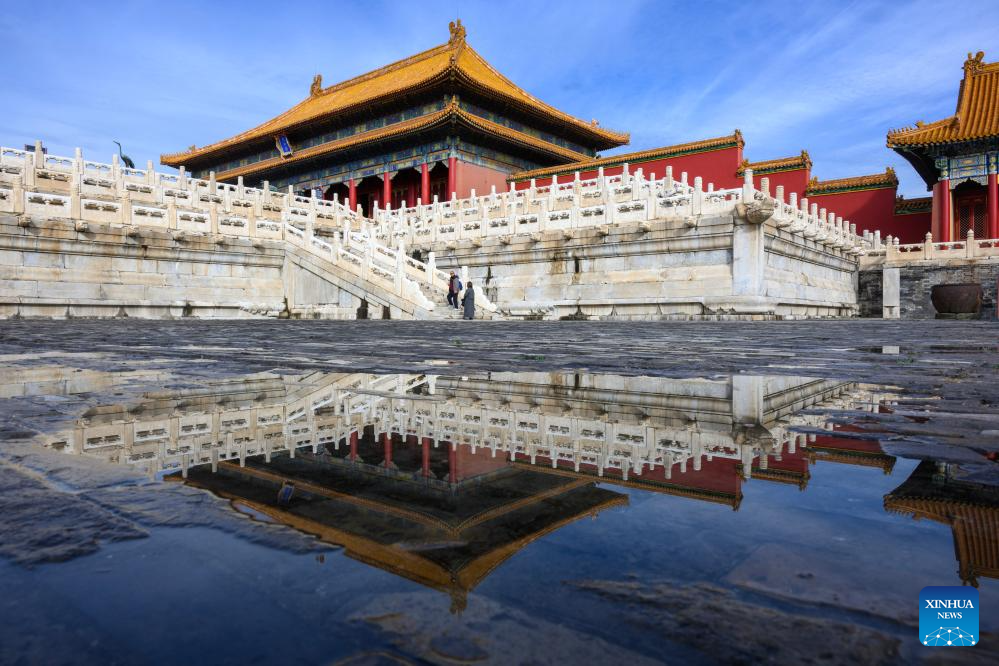
This photo taken on Oct. 10, 2025 shows the Hall of Supreme Harmony (Taihe dian) of the Palace Museum in Beijing, capital of China. This year marks the 100th anniversary of the founding of the Palace Museum. On Oct. 10, 1925, the Palace Museum was established based on the Forbidden City, once the imperial palaces of the Ming (1368-1644) and Qing (1644-1911) dynasties, and opened to the public for the first time, along with its priceless imperial art collections. Today, the museum ranks among the most visited museums in the world. In 2009, the attendance surpassed 10 million for the first time, with the figure exceeding 17.6 million in 2024. (Xinhua/Jin Liangkuai)
BEIJING, Oct. 10 (Xinhua) -- Wang Hao, a university student from north China's Tianjin, queued for nearly five hours outside Beijing's Palace Museum to see "Five Oxen," the world's oldest surviving Chinese paper painting by 8th-century artist Han Huang.
The ancient painting, as well as other priceless cultural relics, has been on display at a special exhibition organized by the museum to mark its centenary on Friday.
Wang was among a wave of visitors flocking to the museum, situated on the site of the Forbidden City, during the just-concluded National Day and Mid-Autumn Festival holiday.
"If you actually stand in front of the painting and see the brushstrokes crafted over a thousand years ago, you'll understand why the wait is worth it," Wang said, brimming with excitement.
For centuries, ordinary people could only catch glimpses of the palace's yellow roof ridges from beyond its towering walls, while the mysteries of its inner world remained a matter of imagination.
On Oct. 10, 1925, the Palace Museum was established based on the Forbidden City, once the imperial palaces of the Ming (1368-1644) and Qing (1644-1911) dynasties, and opened to the public for the first time, along with its priceless imperial art collections.
"Treasures once reserved for emperors have become shared cultural heritage for the entire Chinese nation. This shift was groundbreaking and epoch-making," said Shan Jixiang, former curator of the Palace Museum.
Today, the museum ranks among the most visited museums in the world. In 2009, the attendance surpassed 10 million for the first time, with the figure exceeding 17.6 million in 2024.
In recent years, the museum has digitally documented more than 1 million artifacts and ancient structures, and made high-definition images of more than 100,000 artifacts available online, greatly enhancing public access to its collections.
To make more of its cultural relics accessible to the public, the museum is building a new branch in Beijing's Haidian District.
With 33,000 square meters of exhibition area, the new branch will be able to display 20,000 to 30,000 relics each year, two to three times the number shown at the Palace Museum, according to museum officials.
MODERN EXPERIENCE
Against the backdrop of the Palace Museum's red walls and yellow glazed tiles, countless young visitors in traditional attire pose for photos, immersing themselves in the over 600-year-old complex.
Visitors can also enjoy ice creams shaped like the animal statues perched on the roofs of the palace buildings at the restaurants in the museum. One of these restaurants once served as the royal family's ice storage in the Qing Dynasty (1644-1911).
Inside and beyond the museum, its merchandise has grown increasingly popular in recent years. Among nearly 20,000 cultural and creative products, the Palace Museum Calendar stands out as a favourite among consumers.
Published annually for 17 consecutive years, it has a cumulative circulation of over 8.5 million copies. The 2025 edition, containing images of 400 items from the museum's vast collection, has sold 1.2 million copies.
Some buyers seek inspiration from the patterns of artifacts in the calendar, while others view it as a way to introduce traditional culture to their children. "To me, it is the most beautiful calendar, rich in both pictures and texts. It is truly worth collecting," commented a netizen.
Through these products, the Palace Museum has created meaningful connections between traditional culture and contemporary life.
CULTURAL EXCHANGES
With its growing global influence, the Palace Museum has increasingly become a gateway for the meeting of different cultures.
Earlier this year, the museum hosted an exhibition on Greece's Minoan civilization. Jointly organized by the Palace Museum, the Heraklion Archaeological Museum and other Greek cultural authorities, the exhibition showcased 172 precious artifacts, marking the first major Minoan civilization exhibition ever held in China.
Official data show that since 2012, the Palace Museum has hosted nearly 30 cultural exhibitions from Asia, Europe and the Americas, and organized 79 exhibitions overseas.
The museum also collaborates with institutions such as the Louvre Museum, the British Museum and the Metropolitan Museum of Art to jointly hold exhibitions and academic forums and promote digital projects.
These efforts have earned the museum an international reputation as an inclusive institution. In May, to mark the museum's centenary, the UN Postal Administration issued a commemorative stamp sheet, the first ever dedicated to a single museum.
"Through its exhibitions, research and international collaborations, the Palace Museum has brought Chinese civilization into conversation with the world," said UN Under-Secretary-General for Operational Support Atul Khare at the stamp unveiling ceremony. ■
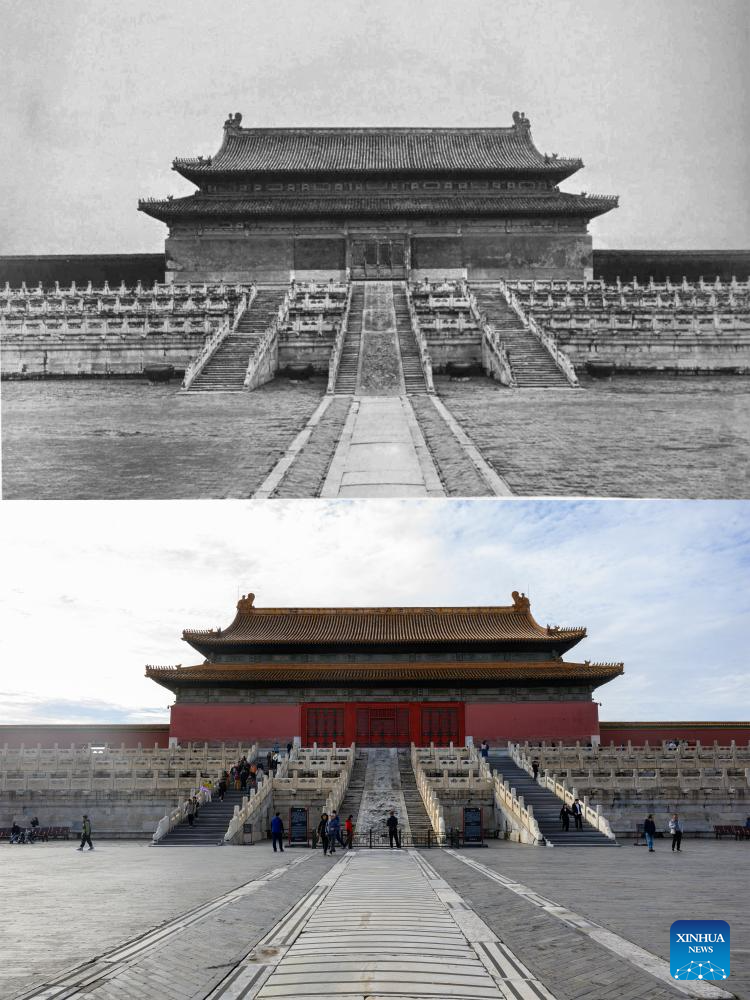
This combo photo shows the Hall of Preserving Harmony (Baohe dian) of the Palace Museum in the early 20th century (above, provided by the Palace Museum) and on Oct. 10, 2025 (below, photo by Xinhua photographer Jin Liangkuai) in Beijing, capital of China. This year marks the 100th anniversary of the founding of the Palace Museum.
On Oct. 10, 1925, the Palace Museum was established based on the Forbidden City, once the imperial palaces of the Ming (1368-1644) and Qing (1644-1911) dynasties, and opened to the public for the first time, along with its priceless imperial art collections.
Today, the museum ranks among the most visited museums in the world. In 2009, the attendance surpassed 10 million for the first time, with the figure exceeding 17.6 million in 2024. (Xinhua)
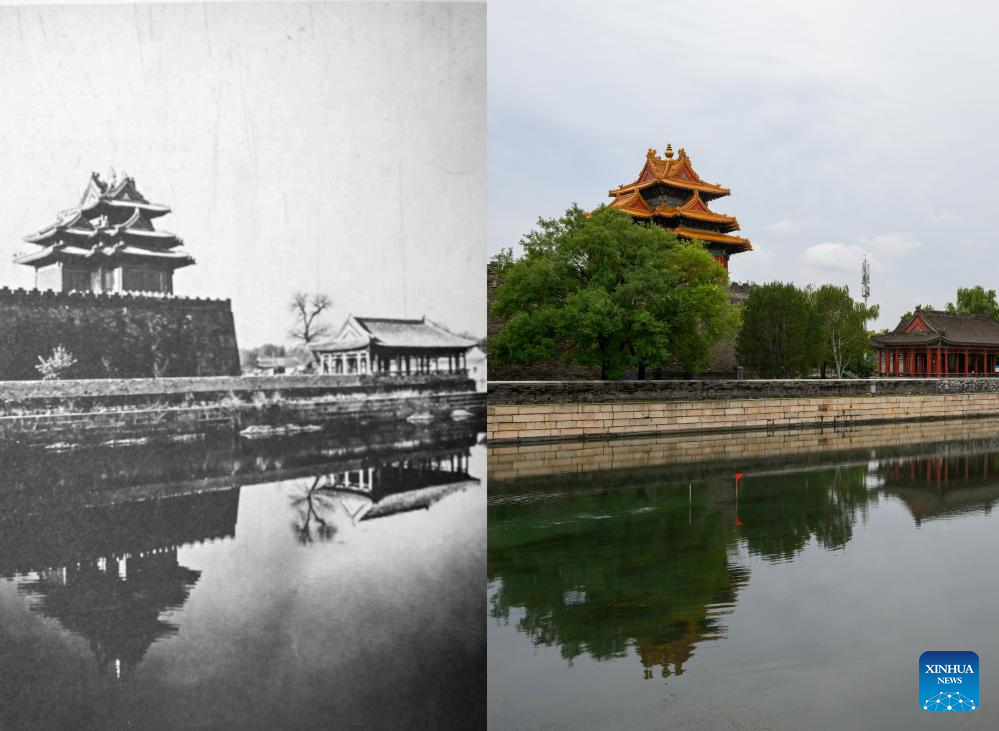
This combo photo shows a turret of the Palace Museum in the early 20th century (L, provided by the Palace Museum) and on Oct. 10, 2025 (R, photo by Xinhua photographer Jin Liangkuai) in Beijing, capital of China. This year marks the 100th anniversary of the founding of the Palace Museum.
On Oct. 10, 1925, the Palace Museum was established based on the Forbidden City, once the imperial palaces of the Ming (1368-1644) and Qing (1644-1911) dynasties, and opened to the public for the first time, along with its priceless imperial art collections.
Today, the museum ranks among the most visited museums in the world. In 2009, the attendance surpassed 10 million for the first time, with the figure exceeding 17.6 million in 2024. (Xinhua)
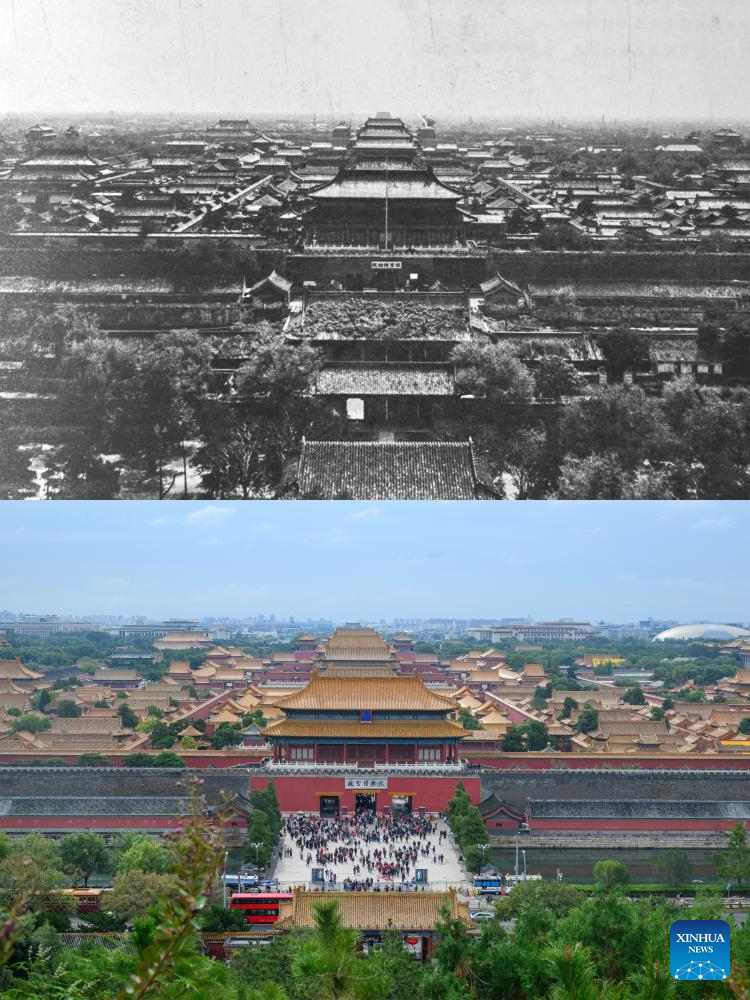
This combo photo shows the Gate of Divine Prowess (Shenwu men) and a general view of the Palace Museum in the early 20th century (above, provided by the Palace Museum) and on Oct. 10, 2025 (below, photo by Xinhua photographer Jin Liangkuai) in Beijing, capital of China. This year marks the 100th anniversary of the founding of the Palace Museum.
On Oct. 10, 1925, the Palace Museum was established based on the Forbidden City, once the imperial palaces of the Ming (1368-1644) and Qing (1644-1911) dynasties, and opened to the public for the first time, along with its priceless imperial art collections.
Today, the museum ranks among the most visited museums in the world. In 2009, the attendance surpassed 10 million for the first time, with the figure exceeding 17.6 million in 2024. (Xinhua)
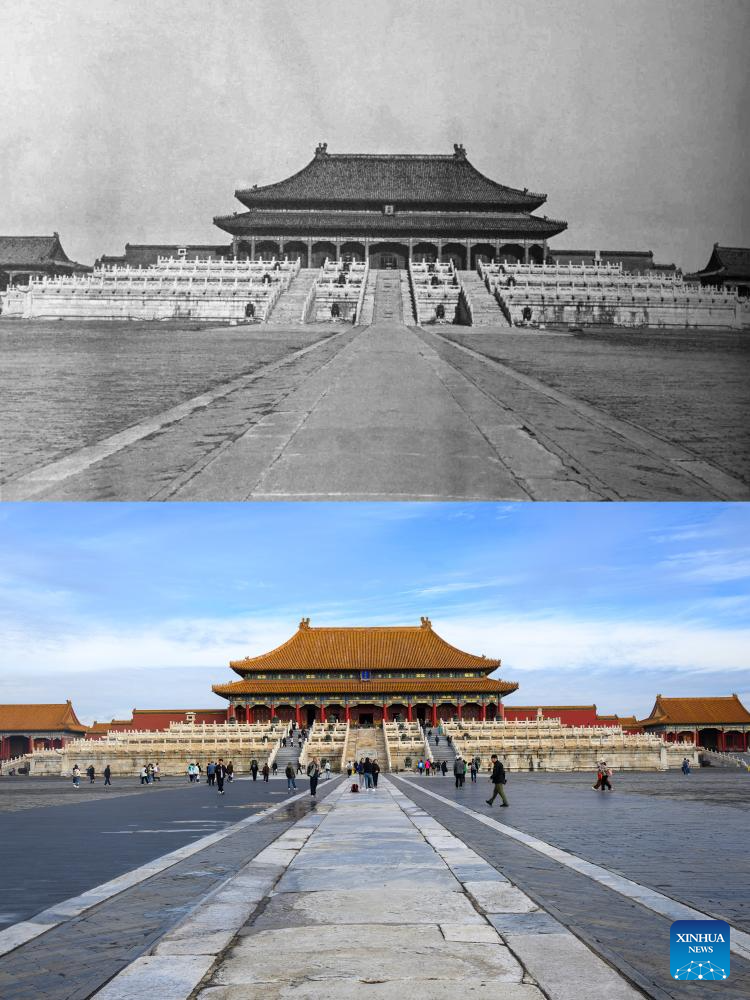
This combo photo shows the Hall of Supreme Harmony (Taihe dian) of the Palace Museum in the early 20th century (above, provided by the Palace Museum) and on Oct. 10, 2025 (below, photo by Xinhua photographer Jin Liangkuai) in Beijing, capital of China. This year marks the 100th anniversary of the founding of the Palace Museum.
On Oct. 10, 1925, the Palace Museum was established based on the Forbidden City, once the imperial palaces of the Ming (1368-1644) and Qing (1644-1911) dynasties, and opened to the public for the first time, along with its priceless imperial art collections.
Today, the museum ranks among the most visited museums in the world. In 2009, the attendance surpassed 10 million for the first time, with the figure exceeding 17.6 million in 2024. (Xinhua)
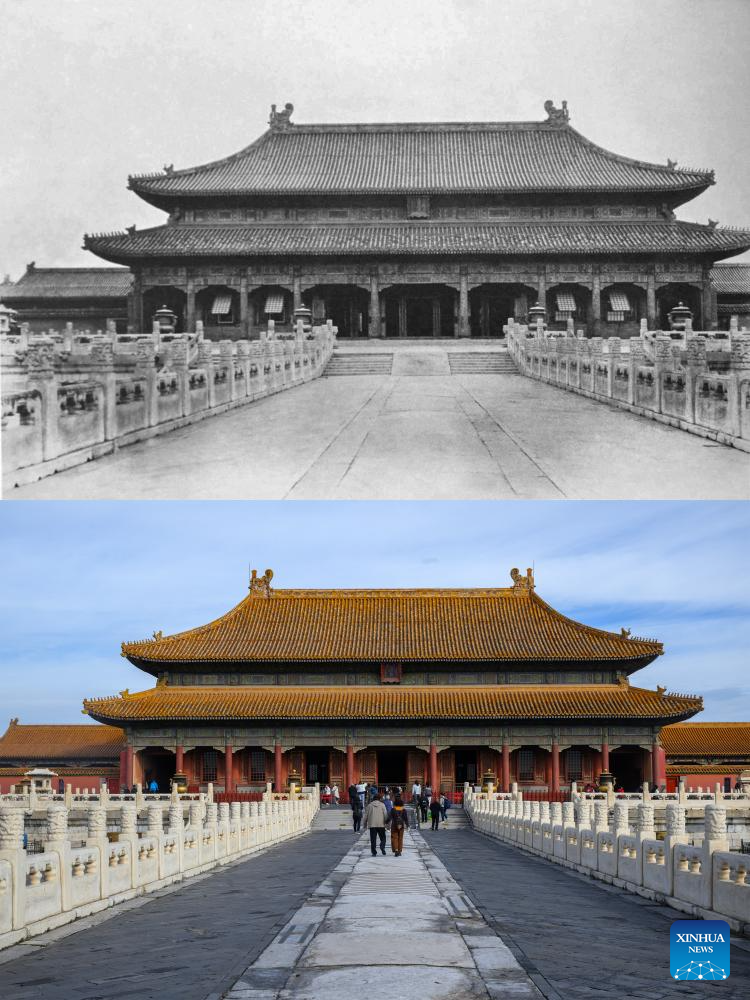
This combo photo shows the Palace of Heavenly Purity (Qianqing gong) of the Palace Museum in the early 20th century (above, provided by the Palace Museum) and on Oct. 10, 2025 (below, photo by Xinhua photographer Jin Liangkuai) in Beijing, capital of China. This year marks the 100th anniversary of the founding of the Palace Museum.
On Oct. 10, 1925, the Palace Museum was established based on the Forbidden City, once the imperial palaces of the Ming (1368-1644) and Qing (1644-1911) dynasties, and opened to the public for the first time, along with its priceless imperial art collections.
Today, the museum ranks among the most visited museums in the world. In 2009, the attendance surpassed 10 million for the first time, with the figure exceeding 17.6 million in 2024. (Xinhua)
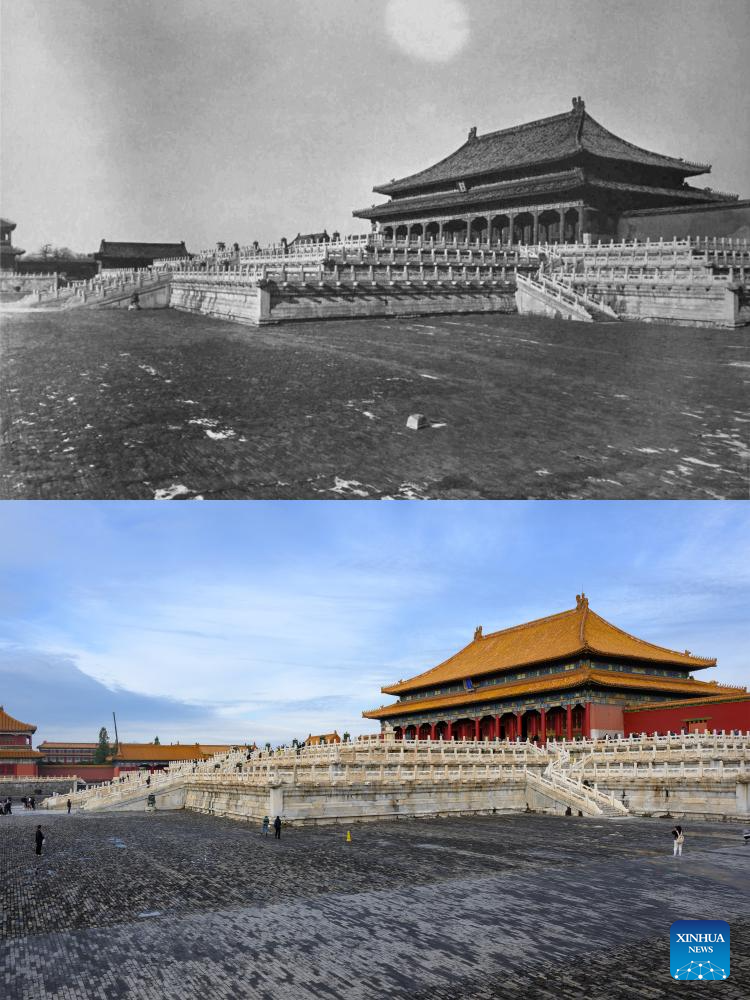
This combo photo shows the Hall of Supreme Harmony (Taihe dian) of the Palace Museum in the early 20th century (above, provided by the Palace Museum) and on Oct. 10, 2025 (below, photo by Xinhua photographer Jin Liangkuai) in Beijing, capital of China. This year marks the 100th anniversary of the founding of the Palace Museum.
On Oct. 10, 1925, the Palace Museum was established based on the Forbidden City, once the imperial palaces of the Ming (1368-1644) and Qing (1644-1911) dynasties, and opened to the public for the first time, along with its priceless imperial art collections.
Today, the museum ranks among the most visited museums in the world. In 2009, the attendance surpassed 10 million for the first time, with the figure exceeding 17.6 million in 2024. (Xinhua)
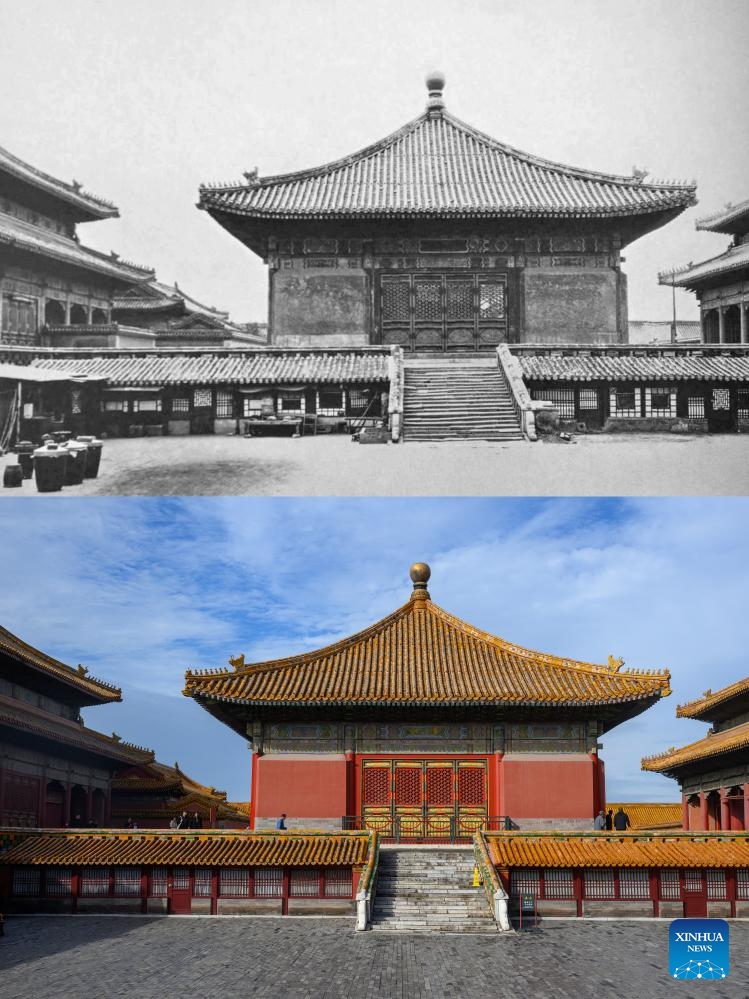
This combo photo shows the Hall of Union (Jiaotai dian) of the Palace Museum in the early 20th century (above, provided by the Palace Museum) and on Oct. 10, 2025 (below, photo by Xinhua photographer Jin Liangkuai) in Beijing, capital of China. This year marks the 100th anniversary of the founding of the Palace Museum.
On Oct. 10, 1925, the Palace Museum was established based on the Forbidden City, once the imperial palaces of the Ming (1368-1644) and Qing (1644-1911) dynasties, and opened to the public for the first time, along with its priceless imperial art collections.
Today, the museum ranks among the most visited museums in the world. In 2009, the attendance surpassed 10 million for the first time, with the figure exceeding 17.6 million in 2024. (Xinhua)
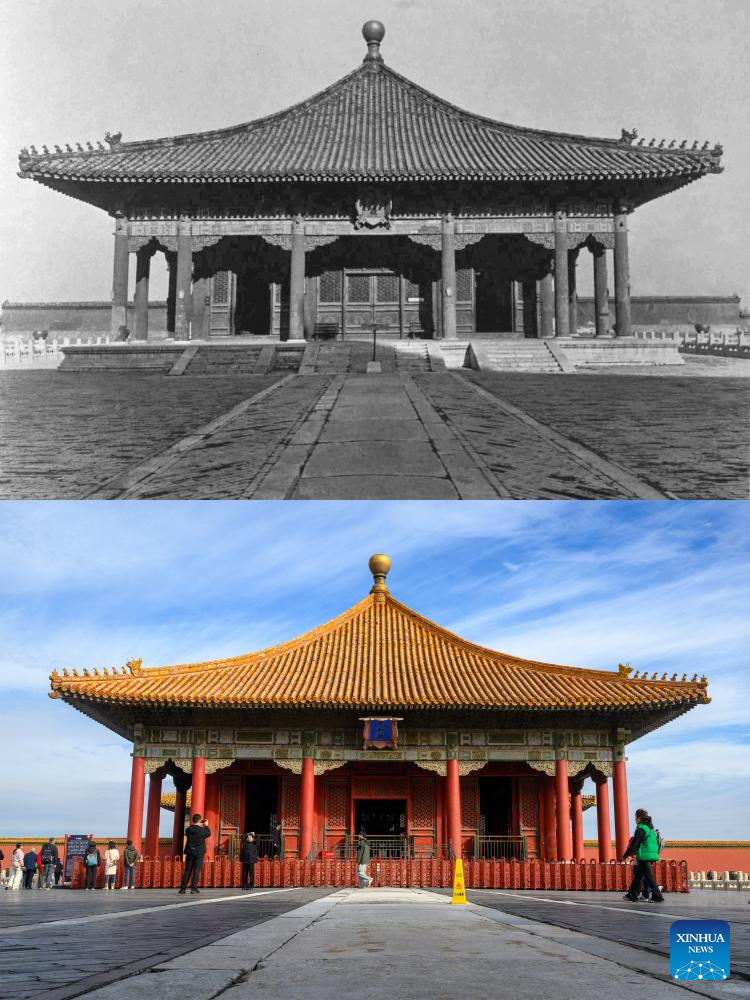
This combo photo shows the Hall of Central Harmony (Zhonghe dian) of the Palace Museum in the early 20th century (above, provided by the Palace Museum) and on Oct. 10, 2025 (below, photo by Xinhua photographer Jin Liangkuai) in Beijing, capital of China. This year marks the 100th anniversary of the founding of the Palace Museum.
On Oct. 10, 1925, the Palace Museum was established based on the Forbidden City, once the imperial palaces of the Ming (1368-1644) and Qing (1644-1911) dynasties, and opened to the public for the first time, along with its priceless imperial art collections.
Today, the museum ranks among the most visited museums in the world. In 2009, the attendance surpassed 10 million for the first time, with the figure exceeding 17.6 million in 2024. (Xinhua)
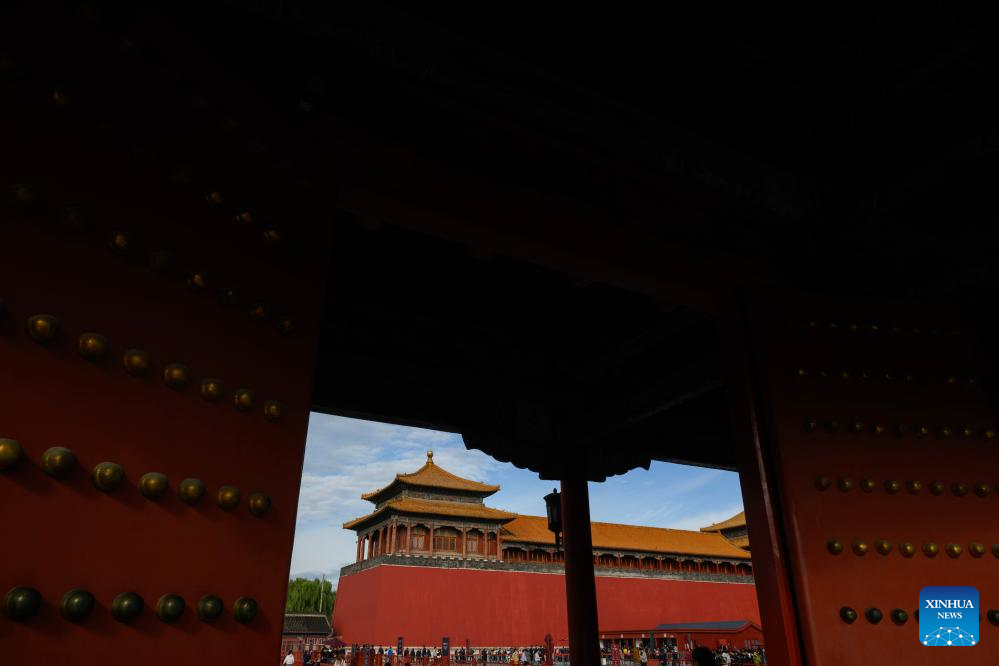
This photo taken on Oct. 10, 2025 shows a Swallow-Wing Pavilion (Yanchi Tower) of the Palace Museum in Beijing, capital of China. This year marks the 100th anniversary of the founding of the Palace Museum.
On Oct. 10, 1925, the Palace Museum was established based on the Forbidden City, once the imperial palaces of the Ming (1368-1644) and Qing (1644-1911) dynasties, and opened to the public for the first time, along with its priceless imperial art collections.
Today, the museum ranks among the most visited museums in the world. In 2009, the attendance surpassed 10 million for the first time, with the figure exceeding 17.6 million in 2024. (Xinhua/Jin Liangkuai)
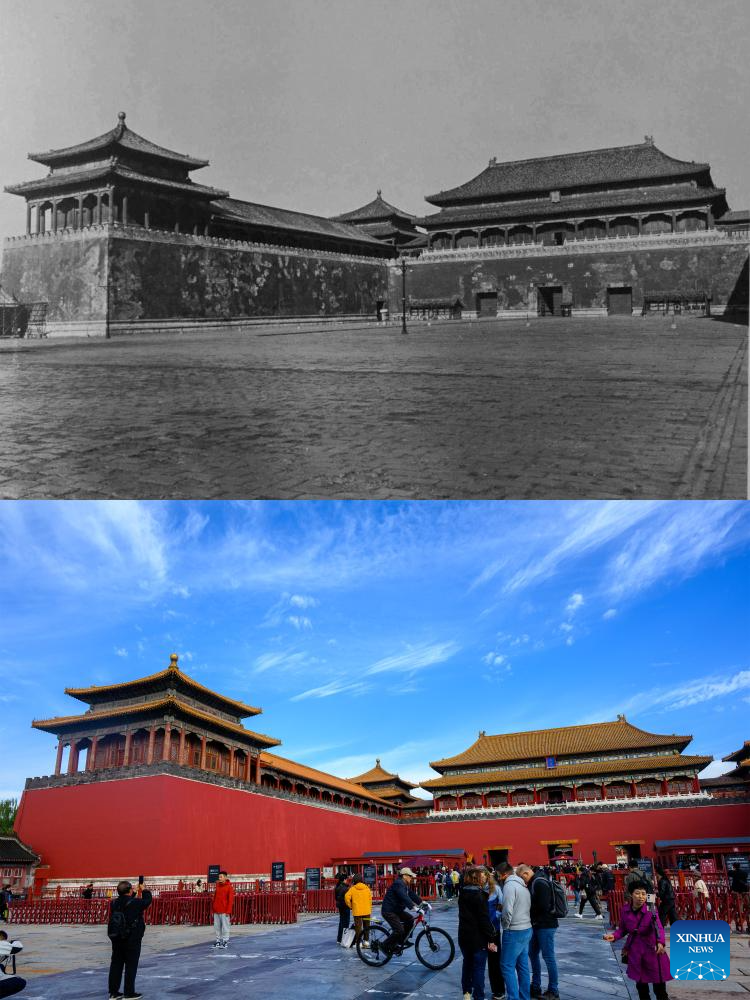
This combo photo shows the Meridian Gate (Wu men) and a Swallow-Wing Pavilion (Yanchi Tower) of the Palace Museum in the early 20th century (above, provided by the Palace Museum) and on Oct. 10, 2025 (below, photo by Xinhua photographer Jin Liangkuai) in Beijing, capital of China. This year marks the 100th anniversary of the founding of the Palace Museum.
On Oct. 10, 1925, the Palace Museum was established based on the Forbidden City, once the imperial palaces of the Ming (1368-1644) and Qing (1644-1911) dynasties, and opened to the public for the first time, along with its priceless imperial art collections.
Today, the museum ranks among the most visited museums in the world. In 2009, the attendance surpassed 10 million for the first time, with the figure exceeding 17.6 million in 2024. (Xinhua)



